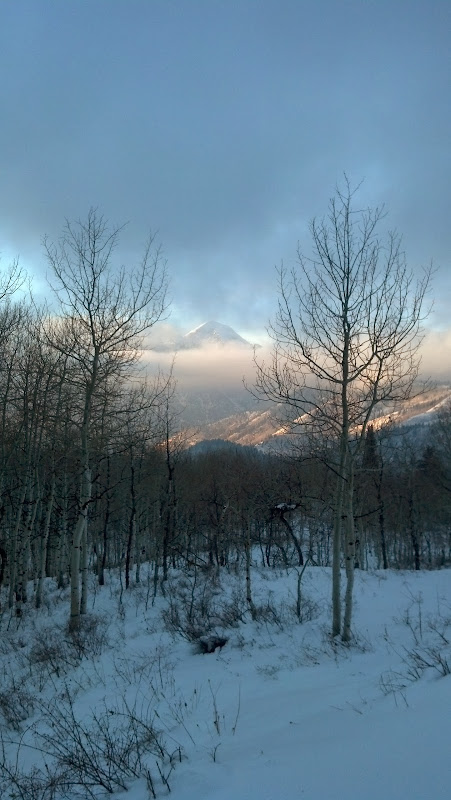Sure, I'd be happy to. I've been trying out different clothing each trip, and I think I've got it down to a system for what works for me. Pretty much all my gear is what Davy recommends. I'll try to mention what's a nice to have, and what's a necessity for me. You could spend thousands on snow gear, or you can go economical and still be every bit as comfortable. I get a bit carried away with gear, but don't think you need to spend hundreds on clothing.
Necessity: Merino Wool Long underwear. I like the medium weight. Here's what I've got:
Necessity (for me): light weight minus 33 (that's the brand) merino wool top. I'd prefer a medium weight, but most of those have zippers and I don't want a zipper on my base layer. This is my most important piece of gear. It never stinks, and it regulates my heat extremely well. I was hiking in just this shirt today for about 45 min and as long as I was moving I didn't get cold. Once I stopped moving, I put a jacket on immediately.
medium weight minus 33 merino wool long johns. These are my base layer on the bottom. I love these things. They're also a necessity for me, because I get cold. A lot of guys just use running tights or biker pants instead, but I need a bit more warmth.
Nice to have: I wear some old volcom snowboard pants over my merino wool long john bottoms. The pants are bulky and heavy, but they have 2' zippers on the inside of each leg, so I can really regulate my temp well with them. Plus they have built-in gaters which keep my socks dry. These pants used to be super waterproof, but the coating is wearing off, but it doesn't bother me. The only part of me that touches snow/water is from my shin down to my ankles, so waterproofing isn't very necessary.
Waterproof boots. Your boots usually have snow on them the entire day, even in a snowshoe. I use low-top hiking boots cuz that's what I like. Mine are waterproof, which means they don't let water in (and they don't really let sweat out very well either). The gaiters on the pants keep my socks dry.
I've been hiking with hiking socks lately, but this time I tried some icebreaker hike+lite mini socks (merino wool). I loved these socks so much that I ordered a second pair as soon as I got home. My socks were wet (from sweat) when I was done, but my feet were toasty warm, and the merino wool wicks the sweat away from your skin. So even though my socks were damp, my skin was totally dry. Crazy. Any merino wool socks should do the trick here.
Luxury items. I've had the hardest time regulating my heat from the waist up. I'm usually far too hot, and hardly ever too cold. I've experimented with a few different top layers and shells, but I struggled to find anything that breathed very well. I know I need pit zips, and the bigger the better (like my pants). Davy told me about the Millet Belay Hybrid jacket a year or so back, and I couldn't afford it at the time so I passed on it. This time around, I was ready to try just about anything to be able to regulate my heat for my upper body. I used it this trip and fell in love. It's a luxury item, and it's expensive. You don't need to spend nearly this much on a midlayer, but it was worth it for me. I'm convinced that a fleece vest would do just fine for snowshoeing. Anyway, here are the details on that jacket:
Millet Belay Hybrid. On sale now
at Backcountry.com. I know that recreation outlet in AF has had them in the past, but I'm not sure what their current price is.
Two more necessities:
- gloves (my hands stay warm, so I don't need super beefy gloves. I wear these and I love 'em:
http://www.rockymountainatvmc.com/p/716/26635/Fox-Racing-Antifreeze-Gloves?term=fox gloves
My wife is too cold with them, and she needs warmer gloves.
- neck gaiter/buff/neck warmer, etc. With the Millet jacket, I don't end up needing a neck gaiter, since the collar is so nice. However, I never venture without my gaiter. They're pretty much just stretchy tubes of fabric to keep your neck warm. You do not want big thick ones like beanie material. You want thin and stretchy. I use something like this:
http://www.rockymountainatvmc.com/p/822/32255/Schampa-Tube-Multi-Wear-Headwear?term=gaiter
These can be worn as beanies, neck warmers, headbands; pretty much whatever you can come up with. These keep your neck and face warm on cold nights, but you can still breathe through them without getting them soaking wet.


















